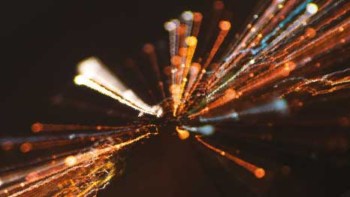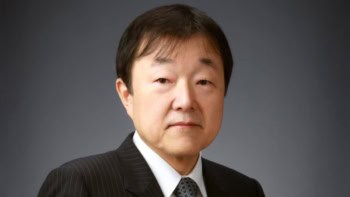After doing a PhD in theoretical condensed-matter physics, Lisa Manning has built a career applying the principles of maths and physics to biological phenomena from cancer to embryogenesis. She talks to Katherine Skipper about her wide-ranging work and how she encourages early-career researchers to broaden their horizons

At a conference in 2014, bioengineer Jeffrey Fredberg of Harvard University presented pictures of asthma cells. To most people, the images would have been indistinguishable – they all showed tightly packed layers of cells from the airways of people with asthma. But as a physicist, Lisa Manning saw something no one else had spotted; she could tell, just by looking, that some of the model tissues were solid and some were fluid.
Animal tissues must be able to rearrange and flow but also switch to a state where they can withstand mechanical stress. However, whereas solid-liquid transitions are generally associated with a density change, many cellular systems, including asthma cells, can change from rigid to fluid-like at a constant packing density.
Many of a tissue’s properties depend on biochemical processes in its constituent cells, but some collective behaviours can be captured by mathematical models, which is the focus of Manning’s research. At the time, she was working with postdoctoral associate Dapeng Bi on a theory that a tissue’s rigidity depends on the shape of the cells, with cells in a rigid state touching more neighbouring cells than those in a fluid-like one. When she saw the pictures of the asthma cells she knew she was right. “That was a very cool moment,” she says.
Manning – now the William R Kenan, Jr Professor of Physics at Syracuse University in the US – began her research career in theoretical condensed-matter physics, completing a PhD at the University of California, Santa Barbara, in 2008. The thesis was on the mechanical properties of amorphous solids – materials that don’t have long-ranged order like a crystal but are nevertheless rigid. Amorphous solids include many plastics, soils and foods, but towards the end of her graduate studies, Manning started thinking about where else she could apply her work.
I was looking for a project where I could use some of the skills that I had been developing as a graduate student in an orthogonal way
“I was looking for a project where I could use some of the skills that I had been developing as a graduate student in an orthogonal way,” Manning recalls. Inspiration came from of a series of talks on tissue dynamics at the Kavli Institute for Theoretical Physics, where she recognized that the theories she had worked on could also apply to biological systems. “I thought it was amazing that you could apply physical principles to those systems,” she says.
The physics of life
Manning has been at Syracuse since completing a postdoc at Princeton University, and although she has many experimental collaborators, she is happy to still be a theorist. Whereas experimentalists in the biological sciences generally specialize in just one or two experimental models, she looks for “commonalities across a wide range of developmental systems”. That principle has led Manning to study everything from cancer to congenital disease and the development of embryos.
“In animal development, pretty universally one of the things that you must do is change from something that’s the shape of a ball of cells into something that is elongated,” says Manning, who working to understand how this happens. With collaborator Karen Kasza at Columbia University, she has demonstrated that rather than stretching as a solid, it’s energy efficient for embryos to change shape by undergoing a phase transition to a fluid, and many of their predictions have been confirmed in fruit fly embryo models.
More recently, Manning has been looking at how ideas from AI and machine learning can be applied to embryogenesis. Unlike most condensed-matter systems, tissues continuously tune individual interactions between cells, and it’s these localized forces that drive complex shape changes during embryonic development. Together with Andrea Liu of the University of Pennsylvania, Manning is now developing a framework that treats cell–cell interactions like weights in a neural network that can be adjusted to produce a desired outcome.
“I think you really need almost a new type of statistical physics that we don’t have yet to describe systems where you have these individually tunable degrees of freedom,” she says, “as opposed to systems where you have maybe one control parameter, like a temperature or a pressure.”
Developing the next generation
Manning’s transition to biophysics was spurred by an unexpected encounter with scientists outside her field. Between 2019 and 2023, she was director of the Bio-inspired Institute at Syracuse University, which supported similar opportunities for other researchers, including PhD students and postdocs. “As a graduate student, it’s a little easy to get focused on the one project that you know about, in the corner of the universe that your PhD is in,” she says.
As well as supporting science, one of the first things Manning spearheaded at the institute was a professional development programme for early-career researchers. “During our graduate schools, we’re typically mostly trained on how to do the academic stuff,” she says, “and then later in our careers, we’re expected to do a lot of other types of things like manage groups and manage funding.” To support their wider careers, participants in the programme build non-technical skills in areas such as project management, intellectual property and graphic design.
What I realized is that I did have implicit expectations that were based on my culture and background, and that they were distinct from those of some of my students
Manning’s senior role has also brought opportunities to build her own skills, with the COVID-19 pandemic in particular making her reflect and reevaluate how she approached mentorship. One of the appeals of academia is the freedom to explore independent research, but Manning began to see that her fear of micromanaging her students was sometimes creating confusion.

Peering inside the biological nano-universe: Barbora Špačková on unveiling individual molecules moving in real time
“What I realized is that I did have implicit expectations that were based on my culture and background, and that they were distinct from those of some of my students,” she says. “Because I didn’t name them, I was actually doing my students a disservice.” If she could give advice to her younger self, it would be that the best way to support early-career researchers as equals is to set clear expectations as soon as possible.
When Manning started at Syracuse, most of her students wanted to pursue research in academia, and she would often encourage them to think about other career options, such as working in industry. However, now she thinks academia is perceived as the poorer choice. “Some students have really started to get this idea that academia is too challenging and it’s really hard and not at all great and not rewarding.”
Manning doesn’t want anyone to be put off pursuing their interests, and she feels a responsibility to be outspoken about why she loves her job. For her, the best thing about being a scientist is encapsulated by the moment with the asthma cells: “The thrill of discovering something is a joy,” she says, “being for just a moment, the only person in the world that understands something new.”



